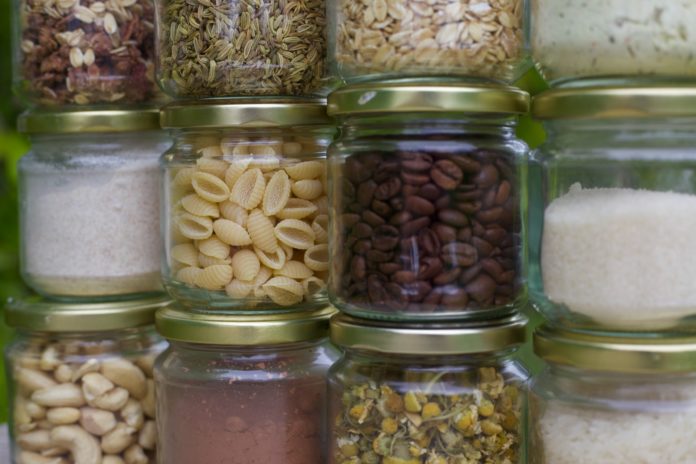When you’re stocking up on dry goods, there’s a bit more to consider than you might think when it comes to storage. The need to be careful with your storage will depend on how quickly you use your stock. But it’s always a good idea to have at least enough substantial stuff like lentils, beans, and rice in your pantry for a few extra meals at all times, in case you’re hungry and haven’t been to the store in a while. Here’s how to store your dry goods to make them last.
Environment
Things like oxygen, sunlight, and humidity can all contribute to the degradation of dry goods’ nutritional value, flavor, and of course, safety. So it’s important to store in a dark, cool, dry place like a closed pantry inside where sunlight won’t degrade the goods. It’s also important to keep your goods stored in the air, and watertight containers to keep oxygen from degrading them. More importantly, if water gets in there is a possibility for mold growth, so it’s very important to keep the air as dry as possible and your containers sealed.
Pests
Unfortunately, some pests are very persistent when it comes to getting into containers. If you’ve never seen any kind of pantry moth or rodent anywhere in your home, and you’re planning on using your dry goods quickly, then it’s probably okay to leave them in their original packaging until you open them. However, unfortunately, many pests such as mice and even some pantry moths can chew through plastic! So if you’ll be keeping your goods around for a long time, the best thing you can do is store them in sealable glass jars. Thick, hard plastic jars or Tupperware are also a good option, but glass is best.















